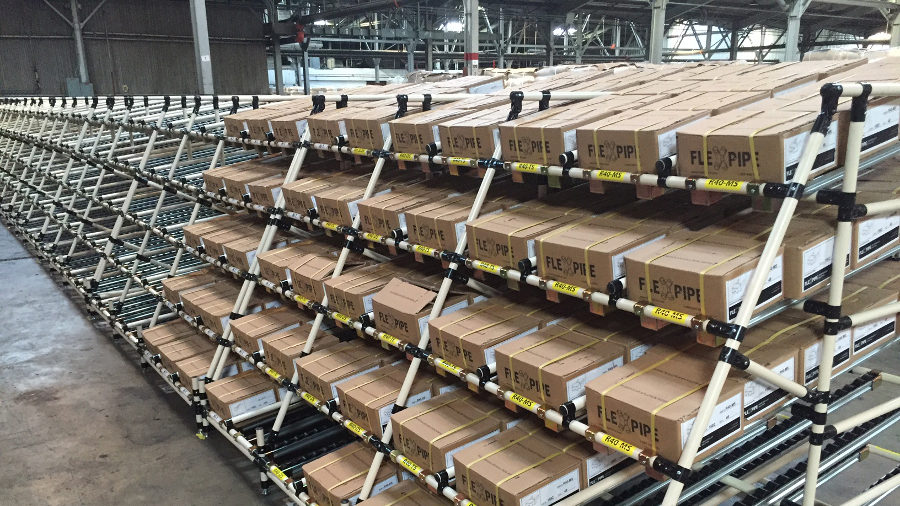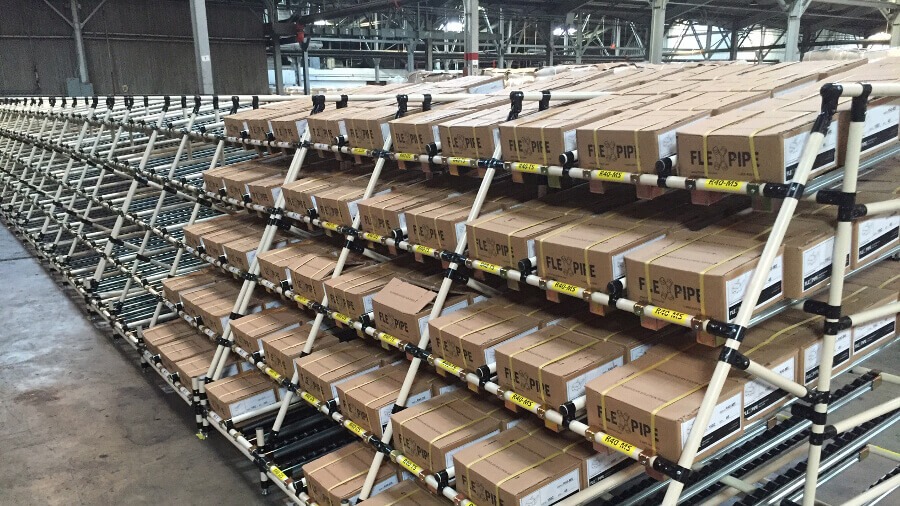Supermarket Flowracks and their influence on Manufacturing

Lean suggests the elimination of large packaging. The use of small lots often requires constant supply. Gravity flow racks help realize this approach with a continuous flow in the factory. Flow racks are usually supplied from behind, and parts are consumed on the other side. Gravity racks can be used on the assembly lines or in the storage areas. The pipe and joint system facilitate the building of these custom roller racks.
The idea is simple: swap the palette of large material containers next to the employee (often representing one or two days of production) for a flow rack, with small boxes representing several hours of production and keeping the presentation neat.
This idea can easily be included in your organization during the design of a lean manufacturing workstation. The flow racks are not new. They were first known for their use in supermarkets for perishable items such as milk. Then in distribution centers with first-in-first-out racking systems (FIFO), but they are now present on assembly lines, services, and even in the health system.
Using small lots and small containers give you the possibility to use parts in a flow mode to transport parts at low cost, to easily follow operation schedules, and adjust to possible changes. This will also allow you to save space on the production line, improve the part presentation, and organize better workstations. An increase in productivity and an increase in production line density (the production volume per unit area) will be quickly achieved.
What are the advantages of this change?
For several years, organizations using FIFO racks have seen the following benefits:
Supplies are more organized
Unlike a standard shelf, a flow rack requires a way to operate: Supplying from behind and consumption in front. This allows two people to accomplish their tasks without interference. Travel is also minimized because all products are found together in one place.
Merchandise is more organized
Some items may be more challenging to store because of their shape. The organization and preparation of components in a flow rack also eliminate wasted time searching for and unpacking parts.
More accessible
To facilitate the work of the operator, the flow rack can be integrated into a workstation. Some travel and unnecessary maneuvers could be eliminated. The ergonomics of the workstation must also be considered in the design of a position.



